Rapid tooling breakthrough: Fused particle technology
Super-fast, inexpensive tooling is ideal for low-pressure molding processes and low production volumes.
Most people wouldn’t connect breakfast cereal, automotive side-impact crash requirements and compression molding, but inventor Jack Van Ert, owner, Vantage Technologies Inc., the prototype shop for molder Vantage Technologies USA (both in China Township, MI, US), did just that when he invented a patent-pending rapid-tooling technology for low-pressure compression molding of sheet-form plastics and composites.
Van Ert is a former director of technology at automotive supplier Automotive Industries (AI, Auburn Hills, MI, US, subsequently purchased by Lear Corp., Southfield, MI, US in 1998). It was while at AI (circa 1994) that he and a colleague were investigating ways to meet then-new automotive side-impact requirements for door inner trim panels. They had been putting friable foams and foamed styrene beads in plastic bags and forcing out the air, then attaching accelerometers and pounding their fists into the bags to see how various materials handled impact energy.
At one point, more for laughs than anything else, Van Ert’s colleague actually bagged up some breakfast cereal to try. Ironically, at the end of testing, the compacted cereal was the material with the best energy-absorption values! Van Ert recalls that the cereal particles interlocked and held their shape in the bag and turned out to be a very tough material. Although the researchers knew that cereal wasn’t likely to meet side-impact requirements, the experience led to new work involving spraying resin onto natural fibers (so they could eliminate the bag), and that, in turn, led to “putting a lot of weird stuff into urethane foams.”
Low-cost, rapid toolmaking technique
Although AI never implemented either concept, Van Ert says when he retired a few years ago, he started playing with it again — this time, not to find an energy-absorbing material but, instead, to look for the optimum combination of particles and bagging materials to make low-pressure compression molding tooling. The goal? Replicate fairly fine details in the surface of sheet-form plastic and composite parts while keeping costs and manufacturing times down vs. conventional tooling alternatives.
Van Ert is also the inventor of differential-pressure molding (DPM), a compression-type molding process he developed at Vantage Technologies during the past 15 years. A low-cost, low-investment, low-pressure molding process, DPM was designed to mold automotive parts, such as headliners, in developing countries. The process relies on the pressure differential between normal atmospheric pressures on the outside of the tool and the reduced pressure on the inside of the tool to mold parts. Today, it’s used to produce a variety of thermoplastic composite parts for industries ranging from transportation to building/construction, renewable energy and consumer products.
Although Van Ert had long since developed a low-cost and fairly fast composite tooling technology for use with DPM — standard tools can be made in several weeks (vs. several months for hard tooling) and a more costly rapid version can be made in as little as a few days — he still felt that there was more work that could be done in this area.
While he was literally tinkering in his garage a few years back and thinking about the low-cost tooling he wanted to make, he recalled another experience early at the start of Vantage Technologies. He’d had a bag of aluminum powder (commonly used as filler for epoxy) and had pressed it up against something while pulling a vacuum and achieved a very accurate impression of the object’s shape. He had not perfected DPM at that point, so he was just trying to work with different fillers to improve tool cooling to reduce cycle time. While the bagged aluminum powder didn’t work for that purpose, it was yet another idea that Van Ert tucked away. Later, when he had perfected DPM and was using the process to make prototype and production parts, he recalls thinking that he probably could make a tooling system that would work with the low-pressure DPM process, but didn’t get around to doing it. It took retirement for him to revisit both ideas.
This time, Van Ert sandwiched a variety of particulate materials between two thin, flexible films in a sealed rectangular (0.6m by 1.2m) frame fitted with a vacuum valve. Fine powders were arranged on what became the back side of the film molding surface to capture intricate details, with coarser particles in a variety of sizes layered behind. As had happened with the bag of aluminum powder, Van Ert laid the frame over a “master” object, with the fine particle-backed film in contact with the master under low pressure, and then pulled a higher vacuum on the frame contents to compact the particles. The result? The film and particles conformed to the master’s shape, compacting and interlocking in such a way that they held their shape after the frame was lifted off the master as long as the vacuum on the frame was maintained. Moreover the surface quality was high.
“I surprised myself, thinking, ‘Gee, this is a really good impression,’ even using a super-thin film material and without extra reinforcement,” he recalls. To see how robust his tool was, Van Ert later stood on it, and it held strong. He has since refined the proprietary mix of particles, the films, and the framing system. Using the technology, which he’s currently calling fused-particle tooling (FPT), he now can create single- or double-sided compression-type molds extremely quickly and inexpensively. “It’s literally the case,” he claims, “that when you have a production quantity of only two parts — ever — that this tooling can be cost-effective.”
FPT is ideal for use in Van Ert’s DPM molding system (see the accompanying photos). “These aren’t mockups or facsimile tools,” he claims. “They yield production-quality parts — automotive production quality.” He recalls that last year, Vantage was asked to make a fiberglass mockup of a headliner for a drivable high-performance car that would debut in an auto show. “The customer needed one headliner for this show car,” recalls Van Ert. “It took us one day after receiving the NC-cut model to make a tool and mold parts. We ended up giving them four parts for the price of one so they could do further fit-and-finish work and testing. That’s how quick and cost-effective this tooling process can be.” He’s also used the technology to make tools to mold composite parts for concrete forms, architectural panels and other automotive parts.
Tools in minutes, not months
Van Ert says he currently can make a 1.4m2 tool in roughly 5 to 15 minutes that can produce at least 50 parts. Eventually he hopes to be able to drive the tool production time down to between 2 and 10 minutes. He acknowledges that because he’s currently not putting cooling lines in FPT tools, that cycle times will be slower (on the order of 4 to 5 minutes instead of 1 to 2 minutes). However, he contends that the speed and low cost makes these tools perfect for short production runs.
Although the tool’s films typically must be discarded every third or fourth time he remakes a tool, and each time a tool is disassembled, some powder is lost to spillage, Van Ert says that 95% of the materials used to make a given tool can be reused. FPT tooling is reportedly so fast and so cost-effective, Van Ert claims a molder could literally make a new tool every morning to produce the day’s inventory.
Although he’s still awaiting initial patent protection, Van Ert already has a lot of plans for FPT technology. He’s not only investigating ways to add cooling and heating lines to tools, to either freeze off thermoplastic parts or cross-link thermoset boards in a shorter molding cycle, but he also wants to see if he can cast thermosets in the DPM process, most likely using low-viscosity resins.
Right now, FPT is undergoing field testing to make molds for a variety of parts so Van Ert can get a good sense of just what the technology can do, and he’s conducting demos of FPT and DPM for interested parties from around the world.
Related Content
Renco USA brings Lego-style composite building system to construction
After more than a decade dedicated to R&D, evaluation and testing, the company has proven its MCFR building system in a Lakewood Village project in Florida.
Read MoreComposites end markets: Infrastructure and construction (2024)
Composites are increasingly used in applications like building facades, bridges, utility poles, wastewater treatment pipes, repair solutions and more.
Read MoreNew standard specification supports non-metallic FRP rebar
ASTM International standard D8505 enables further integration of FRP rebar into infrastructure applications.
Read MoreNorco GFRP molds meet high-quality cast concrete beam production needs
A project with P&M successfully achieved manufacture of six 20-meter-long architectural beams for an R&D facility with near-seamless surfaces and on a tight production schedule.
Read MoreRead Next
Plant tour: A&P, Cincinnati, OH
A&P has made a name for itself as a braider, but the depth and breadth of its technical aptitude comes into sharp focus with a peek behind usually closed doors.
Read MoreModeling and characterization of crushable composite structures
How the predictive tool “CZone” is applied to simulate the axial crushing response of composites, providing valuable insights into their use for motorsport applications.
Read MoreCFRP planing head: 50% less mass, 1.5 times faster rotation
Novel, modular design minimizes weight for high-precision cutting tools with faster production speeds.
Read More
.jpg;width=70;height=70;mode=crop)

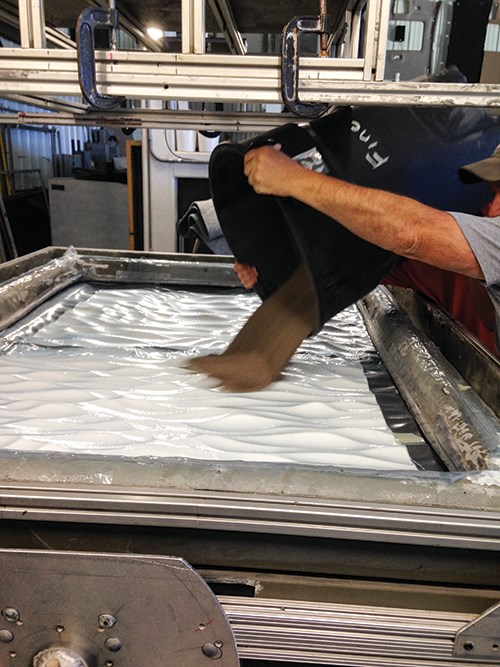
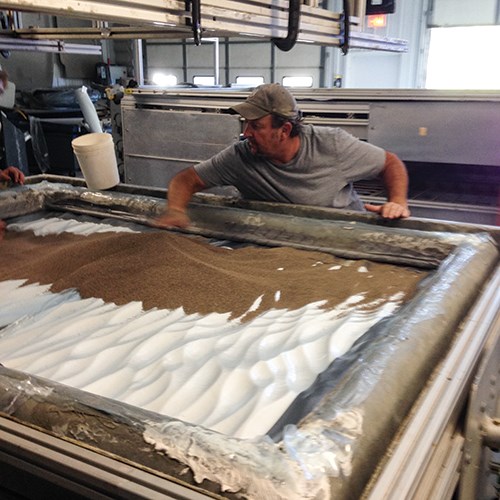
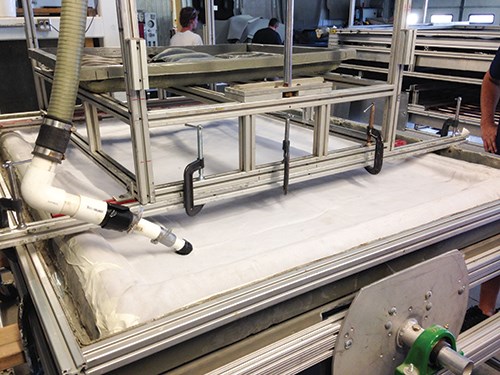
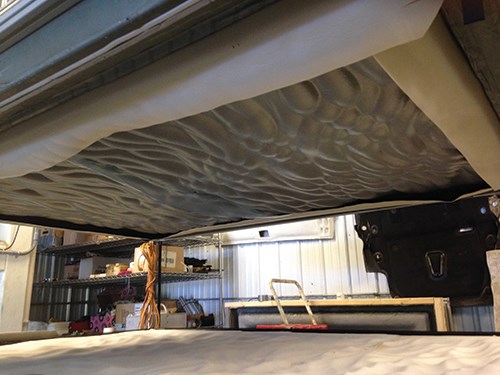
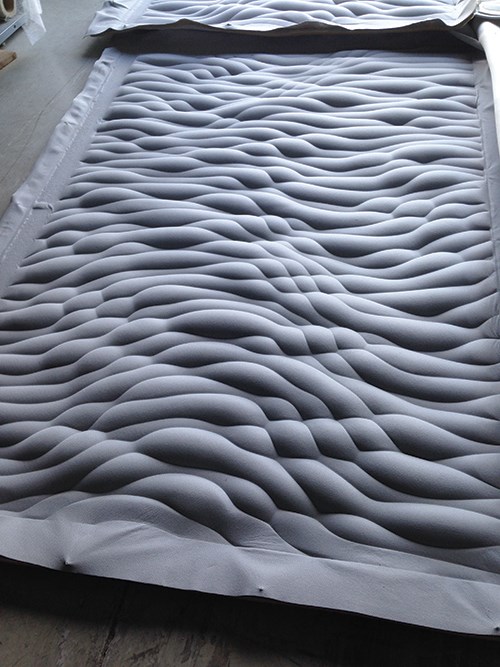








.jpg;maxWidth=300;quality=90)
















